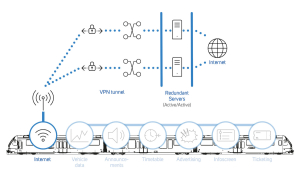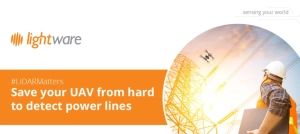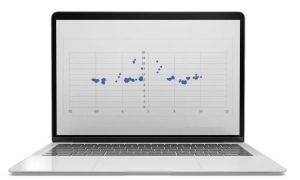NetModule’s Success Story – Rhaetian Railway’s WiFi Solution
Written by NetModule
The Project
The Rhaetian Railway transports twelve million passengers on adventurous journeys through Graubünden every year. One third of the 385-kilometre-long route network is 1500 metres above sea level. One third is also a UNESCO World Heritage Site. Thanks to the panoramic Bernina Express and Glacier Express trains and with the Rhaetian Railway in the Albula/Bernina Landscape being named a UNESCO World Heritage, the railway enjoys a global reputation.
In 2016, onway ag (formerly WLAN-Partner AG) installed Public-WiFi at the Rhaetian Railway (RhB) station in St. Moritz as part of a pilot project. Further stations in the RhB network followed. This powerful WiFi is now also being made available to passengers on the train. The RhB already had its own infotainment solution in the Bernina and Glacier Express vehicles. In establishing an internet connection, the company sought to meet the following requirements:
- Passengers can connect to the infotainment via WiFi and still access other activities online, such as chats, social media, etc.;
- All requirements of the Federal Act on the Surveillance of Post and Telecommunications Traffic (SPTA) are met (e.g. identification obligation);
- Fleets can be managed via the same solution.
Requirements
The following points convinced RhB that onway’s solution with NetModule hardware was the most suitable:
- Ongoing legal protection of all Public-WiFi internet access points via the same portal and system – continuous flow of information for both trains and stations;
- Passengers only need to register once in a six-month period using an SMS token;Security, reliability and speed
- Central management system for monitoring and managing the entire fleet;
- Ability to offer different usage models for passengers and company employees.of additional devices
Solution
On the hardware side, our certified mobile railroad routers of the NB3800 series were used at RhB for easy networking of large fleets. Our NetModule routers were chosen in this project due to the quality, stability, functionality as well as the modularity of the network components. All data traffic from the vehicle is consolidated using these vehicle routers and routed through a secure VPN tunnel via the mobile network to onway’s data centre.
The VPN tunnel terminates here. The data centre fulfils all central functions such as user authentication, filtering and monitoring user traffic, as well as limiting bandwidths and fulfilling the legal requirements according to the SPTA.

onway ag
Since 2004, the onway ag team has been supporting its customers in the evaluation, planning, implementation as well as operation and support of their WLAN/Network-Access-Control-Solutions and has already successfully implemented more than 100 projects. NetModule AG supports onway ag with its products in the industrial, bus and railroad sectors through its long-standing partnership.
Find the original article here







